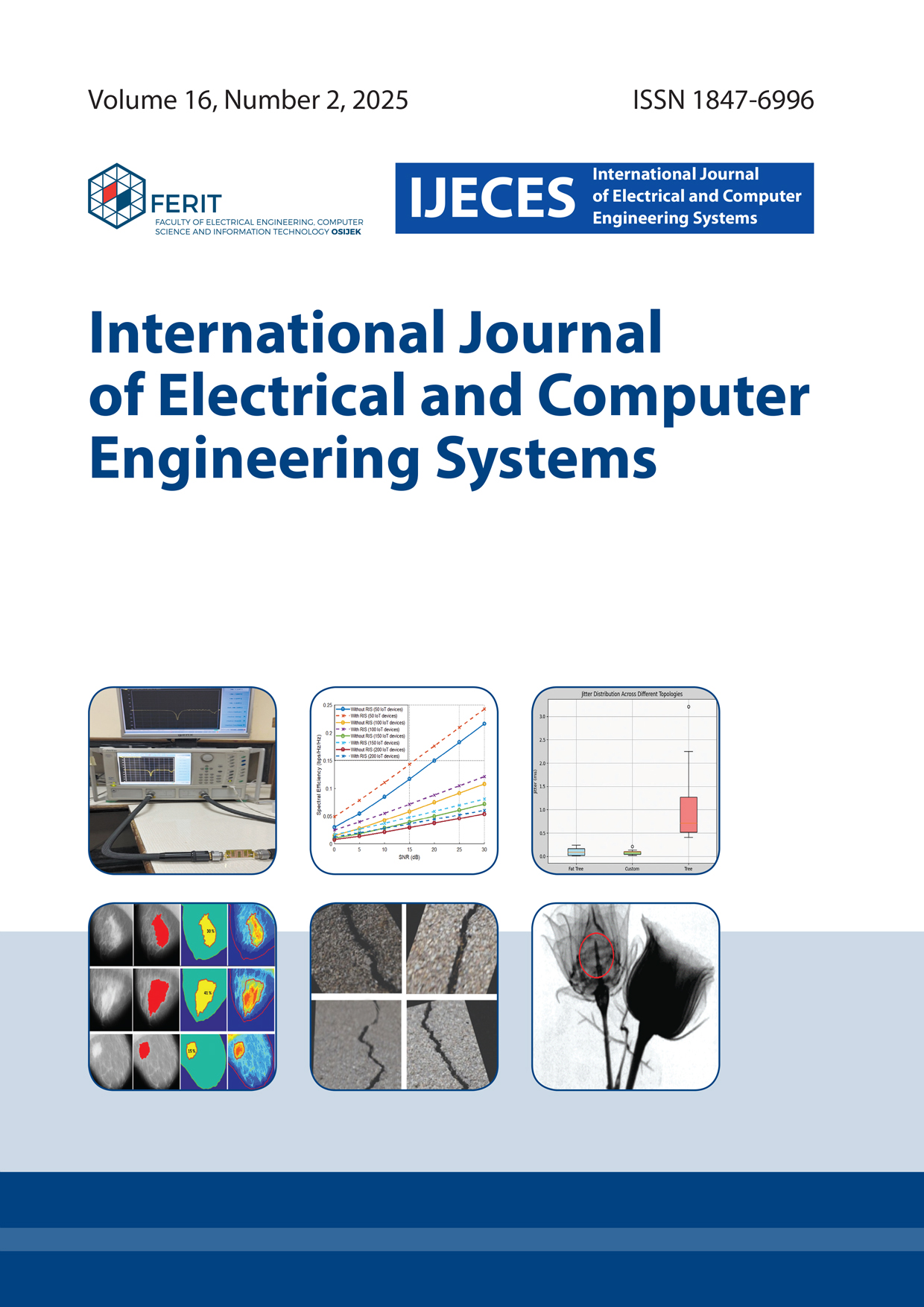Performance Enhancement in OFDM System Using Preamble-Based Time Domain SNR Estimation
DOI:
https://doi.org/10.32985/ijeces.16.2.3Keywords:
Adaptive modulation, Efficiency, OFDM, Preamble-based SNR estimator, Constant Amplitude Zero Autocorrelation preamble, Channel capacityAbstract
This work proposes a time domain signal-to-noise ratio (SNR) estimator for a single input-single output (SISO) orthogonal frequency division multiplexing (OFDM) system using a pre-fast Fourier transform (pre-FFT) SNR estimator. The pre-FFT SNR estimator requires no additional overhead since it reuses the preamble for synchronization in the OFDM system. In this work, a preamble structure proposed by Morelli and Mengali to overcome carrier frequency offset (CFO) due to Doppler effects is utilized. The proposed pre-FFT SNR estimator has been employed to estimate SNR for the SISO-OFDM system, and its performance has been evaluated against the corresponding frequency domain SNR estimator, also known as a post-FFT SNR estimator. The normalized mean square error (NMSE) of the pre-FFT SNR estimator has also been evaluated against the normalized Cramer-Rao bound (NCRB). The simulation results show that for the additive white Gaussian noise (AWGN) and Stanford University Interim-5 (SUI-5) channels, the pre-FFT SNR estimator exhibits 0.41 dB and 0.66 dB difference between the estimated SNR and the actual SNR, respectively. The NMSE of the pre-FFT SNR estimator outperforms the benchmarker post-FFT SNR estimator, which is close to the NCRB. The proposed pre-FFT SNR estimator achieved bit error rate (BER) improvements of about 1 dB and 2 dB for AWGN and SUI-5 channels, respectively, over the post-FFT SNR estimator at BER= 10−4. Moreover, there is an approximately 50% reduction in complexity between the proposed pre-FFT SNR estimator and the benchmarker post-FFT SNR estimator.
Downloads
Published
How to Cite
Issue
Section
License
Copyright (c) 2025 International Journal of Electrical and Computer Engineering Systems

This work is licensed under a Creative Commons Attribution-NonCommercial-NoDerivatives 4.0 International License.


